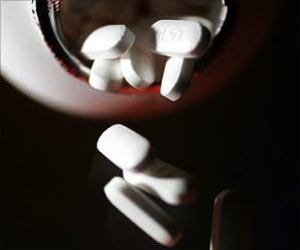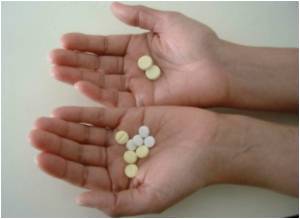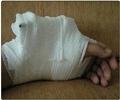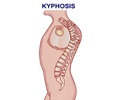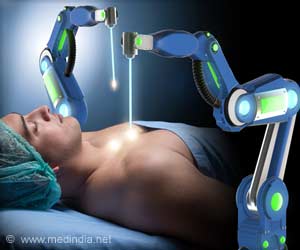
"The bottom line is it inhibits cell membrane repair in two distinct cell types," Lewis said. She is among five winners of the 2014 National Medical Students Competition of the American College of Physicians. Lewis presented her work April 12 during the college's Internal Medicine 2014 meeting in Orlando.
Working in the lab of Dr. Paul McNeil, an MCG cell biologist specializing in cell membrane repair, Lewis found that kidney epithelial cells from monkeys and muscle cells from mice both lost their ability to quickly repair their outer membrane after exposure to zoledronate, a commonly used bisphosphonate, Lewis said. Without drug exposure, cells quickly recovered from a microscope laser injury.
"That is healthy, normal repair," she said, citing a video showing the normal cell experiencing only a brief flicker of fluorescence where hit by a laser. On the other hand, zoledronate-exposed cells quickly filled with a fluorescent dye the researchers placed in the petry dish.
"All this dye coming into the cell means there is still a disruption and no repair occurred to sort of mend the fence," Lewis said. "We know these cells are dying, Basically these videos speak for themselves."
"It's a paradox," added McNeil. "On the one hand, (the drug) is given to people mainly to promote bone health, increase bone density. But in the case of a jaw that has suffered, for example, a tooth extraction, the exact opposite occurs."
Advertisement
While it's not clear whether this failure to repair is happening in other parts of the body, McNeil and Lewis note that cell membrane repair is typically a constant throughout the body.
Advertisement
Bisphosphonates are thought to work primarily by inhibiting bone-consuming cells called osteoclasts, which balance the activty of bone-producing osteoblasts, a balance that's lost in osteoporosis. Bisphosophonate-related osteonecrosis of the jaw, or BRON, is among a fairly long list of side effects for these drugs, including rashes swelling, upper chest pain, irregular heartbeat, and painful or swollen gums and loosening of the teeth, according to MedlinePlus Drug Information. Bisphosphonates also are used to treat hypercalcemia, high blood levels of calcium that can result from cancer, an overactive parathyroid, and calcium supplements; as well as multiple myeloma, cancer of the plasma cells; and cancer that has spread to the bone. Lewis, who is from Savannah, Ga., worked with McNeil last summer as a participant in the MCG Dean's Student Summer Research Program.
Source-Eurekalert


